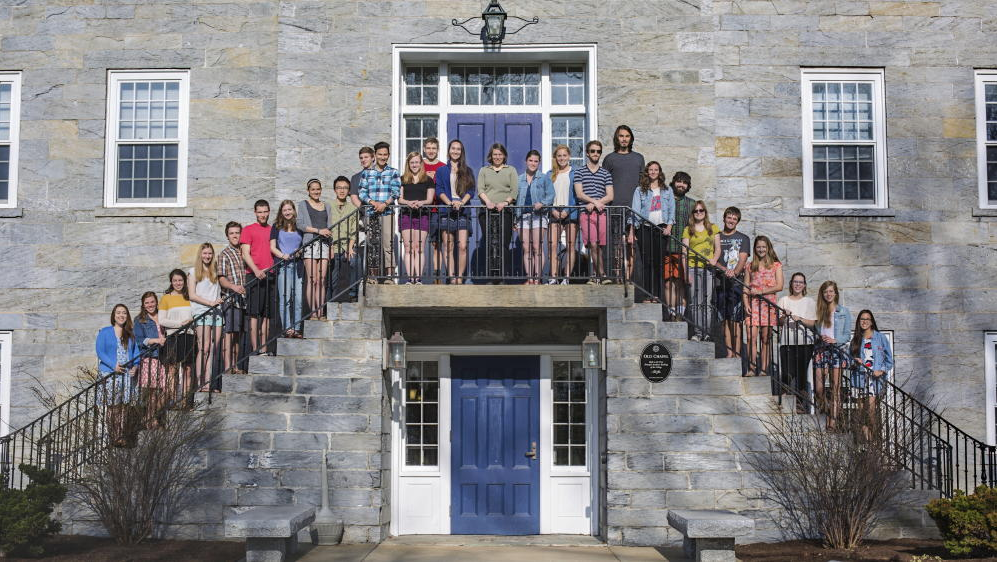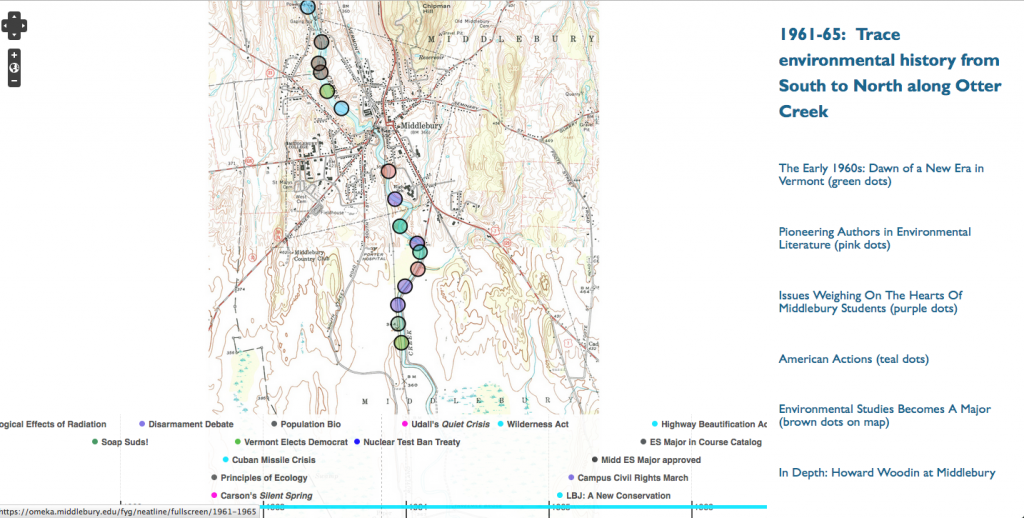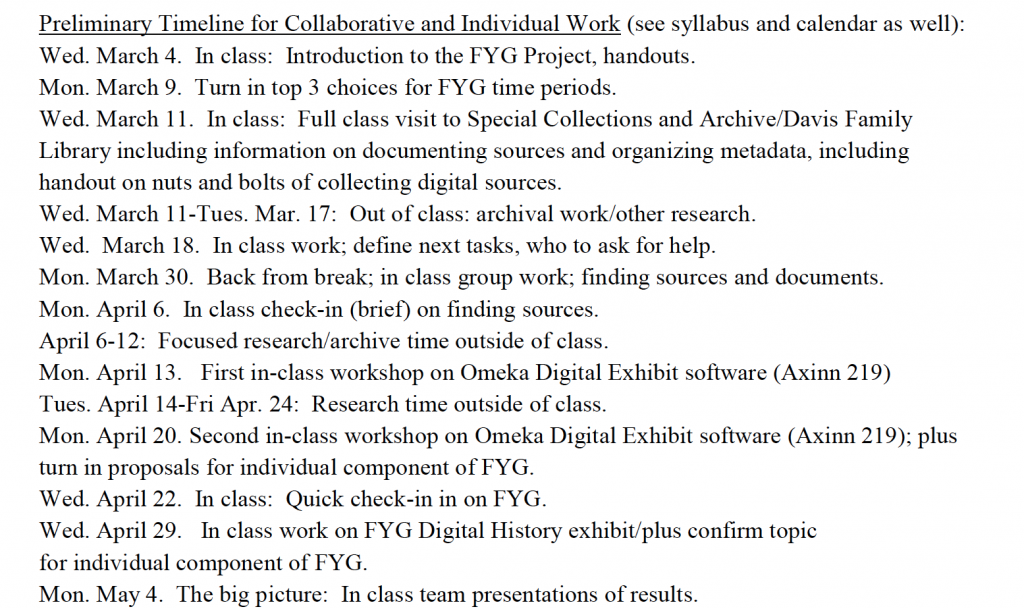In the Fall of 2014 Professor Kathryn Morse was mulling over ways to integrate the 50th anniversary celebration of the Environmental Studies program at Middlebury (1965-2015) into her Spring 2015 Introduction to Environmental History course (HIST 222). She attended a workshop presented by Alicia Peaker, Middlebury’s Post-Doc in the Digital Liberal Arts, about Omeka. Kathy had been looking for a way to contextualize the history of the Environmental Studies program at Middlebury within the local, national and international environmental movements which emerged and changed after 1960. When she saw Omeka, she was drawn by the ability to integrate timelines, primary documents, and visual elements into a wide-ranging, multi-part, on-line exhibit.
What was the goal?
The goals of the project included: to collaborate with students to create a resource on the history of environmental studies and environmental activities at Middlebury for colleagues, and current and future students to use, share, and build upon; to provide HIST 222 students with the experiences of collaborative archival research, primary source analysis, and critical thinking about the historical forces shaping their own educations; and to build shared understanding of the college’s history. As a first step, she met with Alicia to discuss how to proceed. Kathy began reworking the 200-level course in order to build in the sequence of skills that students would need.
How did it happen?
To give the students a knowledge base to start with, Kathy shared an initial list of environmental events and ideas and changes in the ES curriculum from the 1961-2015 period, to assist the students as they selected the 5-year periods that they would research in teams of 3-5 students each. After each student chose a time period and Kathy put together eight teams, Kathy chose the remaining period, 1995-1999, to work on herself.
“Every puzzle I had to solve – they were solving too!”
Teacher as Collaborator
Kathy explained that creating her own exhibit was a crucial part of the project. It allowed her to share the experience with her students, and to confront the obstacles and challenges they faced. If she were to pursue a similar project in the future, this is a step that she would take prior to the start of the project, so that she would be able to anticipate where students might run into difficulties. In addition, it allowed her to see how certain decisions about structure and visual elements at the start might help to streamline the end product and create consistency with color and style choices on the nine different exhibit websites. Kathy said she would also consider employing more guidelines about the division of group work to ensure that all students were completing an equal amount of writing, uploading and entering of metadata.
Making Connections
This project also allowed the students to work with a larger number of staff members on campus including Alicia and the complete staff of Special Collections in the library (thanks to Danielle Rougeau, Joseph Watson, and Rebekah Irwin). This collaborative work also resulted in sharing some archived materials that were housed in the Franklin Environmental Center at Hillcrest with Special Collections to ensure that the program’s own records, and those of Environmental Council over the years, could also be used as a resource for students now and in the future.
For each individual student, the final piece of the project was a brief research paper in which he or she dug deeper into a single chosen topic or theme within the 50-odd year period of the project, or write in depth about one topic, or to analyze particular themes across a broader span of time. Paper topics included: student concerns and activities with regard to food on campus over time; student environmental organizations over time; the importance and role of response on campus to Paul Ehrlich’s 1968 text The Population Bomb; oral histories with two early graduates of the ES program; the 1970s energy crisis on campus; and many others. One of Kathy’s few disappointments with the project was that there was not enough time to share the individual papers with the whole class. However, many of them are built into the online exhibit as “In Depth” essays to demonstrate the historical curiosity and analysis that the students brought to the project. These essays—and the primary sources archived at the Omeka site—will serve as a jumping off point for future students to complete further research and analysis of environmental trends on multiple scales. As Morse points out, the project lends itself to different interpretations of the broader environmental history of the campus and curriculum.
“I might tell one story, based on this evidence, of change over time. But my students might tell different stories, and that’s ok.”
Learning Goals:
- Collaborate effectively
- Engage in independent research, inquiry, and/or creative expression.
- Explore a field of study in depth


